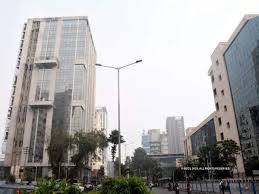Puravankara’s ₹2,700 Crore Malabar Hill

Malabar Hill has always been one of Mumbai’s most prestigious neighborhoods, known for its greenery, sea views, and historic landmarks. In a major announcement, Puravankara has secured redevelopment rights for a housing society in this exclusive area, with a project value estimated at ₹2,700 crore. This marks a bold entry for the developer into South Mumbai’s ultra-luxury segment and has generated excitement across the real estate market.
For decades, Malabar Hill has been home to some of India’s most prominent industrialists, celebrities, and political leaders. Properties here are rarely available, and the chance to build modern residences in such a high-demand location is extremely rare. By taking up this redevelopment, Puravankara is not only creating new homes but also reimagining how people will live in one of the city’s oldest and most beloved neighborhoods.
The scale of this redevelopment is massive. Beyond demolishing old structures and constructing new ones, the plan will involve modern amenities, larger apartments, and infrastructure that matches global standards. With the growing emphasis on sustainable development, the project is also expected to include eco-friendly features such as energy-efficient systems, rainwater harvesting, and smart home technology. This approach ensures that while the neighborhood gets a facelift, it does so with long-term sustainability in mind.
For Puravankara, the project is also a strategic move. The company has earned a reputation in Bengaluru, Chennai, and other cities for delivering quality projects on time. Now, entering South Mumbai allows them to establish credibility in India’s most competitive luxury real estate market. Success in Malabar Hill will open doors for further projects across Mumbai and could redefine the developer’s positioning as a national luxury real estate brand.
The demand for premium homes in South Mumbai has remained steady despite market fluctuations. Investors and end-users alike see Malabar Hill as a safe bet because of its exclusivity and limited supply. A modern project here is likely to attract not only residents from within Mumbai but also non-resident Indians and global investors looking to own a slice of India’s most valuable real estate. This creates a strong case for appreciation in property values once the project is complete.
Of course, redevelopment comes with challenges. There are always regulatory hurdles, negotiations with existing residents, and the complexity of construction in a tightly packed urban setting. However, Puravankara’s financial strength and track record suggest that it has the resources and expertise to handle these issues effectively. If managed well, this project could become a benchmark for how redevelopment in heritage neighborhoods should be approached.
The project will also have a ripple effect on surrounding areas like Walkeshwar, Breach Candy, and Cumballa Hill, where several buildings are ripe for redevelopment. By setting a high standard in Malabar Hill, Puravankara could inspire more developers to take up similar projects and contribute to a broader transformation of South Mumbai’s skyline. This not only benefits residents but also enhances the overall urban fabric of the city.
In conclusion, Puravankara’s ₹2,700 crore redevelopment project at Malabar Hill represents far more than a real estate deal. It is an opportunity to combine modern luxury with the cultural charm of one of Mumbai’s most iconic localities. For residents, it means upgraded homes without leaving their beloved neighborhood. For the city, it signals a future where heritage and innovation coexist, and where redevelopment projects can become symbols of progress and aspiration.